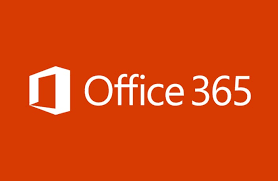Best Practices for Small to Medium-Sized Businesses
IT infrastructure is critical to the success of small and medium-sized businesses (SMBs) in today’s digital age. However, outdated or inefficient IT infrastructure can impede a business’s ability to compete and grow, making it essential to streamline your IT infrastructure for cost savings. In this article, we will explore some best practices for streamlining your IT infrastructure as an SMB, with a focus on cost savings. By implementing these best practices, you can optimize your IT infrastructure, increase productivity, and reduce costs, helping your business stay competitive in today’s fast-paced business environment.
Evaluate Your Current IT Infrastructure
Before making any changes to your IT infrastructure, you must first evaluate your current setup. This includes identifying outdated hardware and software, assessing the effectiveness of your current systems, and determining where improvements can be made. Here are some key areas to focus on during your evaluation:
- Network infrastructure: Evaluate your network infrastructure, including switches, routers, and firewalls. Ensure that your network is secure and reliable, and consider upgrading to faster and more efficient equipment if necessary.
- Servers and storage: Evaluate your server and storage infrastructure to ensure that it is reliable and scalable. Consider implementing cloud-based services to reduce the need for on-premises hardware.
- Software: Evaluate your software applications to ensure that they are up-to-date and being used effectively. Identify any redundant software that can be eliminated to reduce costs.
- Security: Evaluate your security measures to ensure that they are up-to-date and effective. Identify any areas of vulnerability that need to be addressed.
Consolidate Your Hardware
After evaluating your current infrastructure, it’s time to consolidate your hardware. This can help reduce costs, simplify management, and improve scalability. Here are some ways to consolidate your hardware:
- Use cloud-based services: Consider using cloud-based services to reduce the need for on-premises hardware. For example, instead of hosting your own email server, consider using a cloud-based email service such as Microsoft 365.
- Virtualize servers: Virtualization technology allows you to run multiple virtual servers on a single physical server, reducing the need for additional hardware.
- Consolidate storage: Consider consolidating your storage into a single, centralised location. This can help reduce costs and simplify management.
Upgrade Your Network
Upgrading your network is essential for streamlining your IT infrastructure. A faster and more reliable network will enable employees to work more efficiently and productively. Here are some ways to upgrade your network:
- Upgrade your internet connection: A high-speed internet connection is essential for modern businesses. Consider upgrading to a faster internet plan to improve productivity.
- Upgrade your routers and switches: Upgrading your routers and switches can improve network performance and reliability.
- Implement a wireless network: A wireless network can provide greater flexibility and mobility for employees, enabling them to work from anywhere in the office.
Implement Cloud Services
Moving to cloud services can offer several benefits, including increased flexibility, scalability, and cost savings. Cloud services can include software as a service (SaaS), infrastructure as a service (IaaS), and platform as a service (PaaS). Here are some benefits of implementing cloud services:
- Increased flexibility: Cloud services can be accessed from any device with an internet connection, providing greater flexibility for employees to work from anywhere.
- Scalability: Cloud services can be easily scaled up or down to meet changing business needs.
- Cost savings: Cloud services can be more cost-effective than on-premises solutions, as they eliminate the need for expensive hardware and maintenance.
Train and Educate Employees
Your employees are a critical component of your IT infrastructure. Properly training and educating them on the technology they use can help prevent errors and increase productivity. Here are some ways to train and educate your employees:
- Regular training sessions: Implement regular training sessions to keep your employees up-to-date on the latest software and hardware tools. These training sessions can be conducted in-house or through external vendors.
- User manuals and documentation: Provide user manuals and documentation for all software and hardware tools used by your employees. This can help prevent errors and ensure that employees are using the tools effectively.
- Online training courses: Consider providing access to online training courses to help your employees develop their skills and knowledge.
- Employee feedback: Encourage employee feedback on your IT infrastructure to identify areas that need improvement or additional training.
By investing in your employees’ training and education, you can ensure that they are equipped with the knowledge and skills needed to use your IT infrastructure effectively. This can lead to increased productivity, reduced errors, and a more streamlined IT infrastructure overall.
If you are looking to streamline your IT infrastructure, partnering with a professional IT services company can make the process much easier. Bureau 2000 is a leading IT services provider that can help audit your current infrastructure, identify areas for improvement, and implement effective solutions to streamline your operations. With years of experience working with small to medium-sized businesses, Bureau 2000 can help you achieve a more efficient and streamlined IT infrastructure that meets the unique needs of your business. Contact Bureau 2000 today to learn more about their services and how they can help your business stay ahead in today’s fast-paced digital environment.



